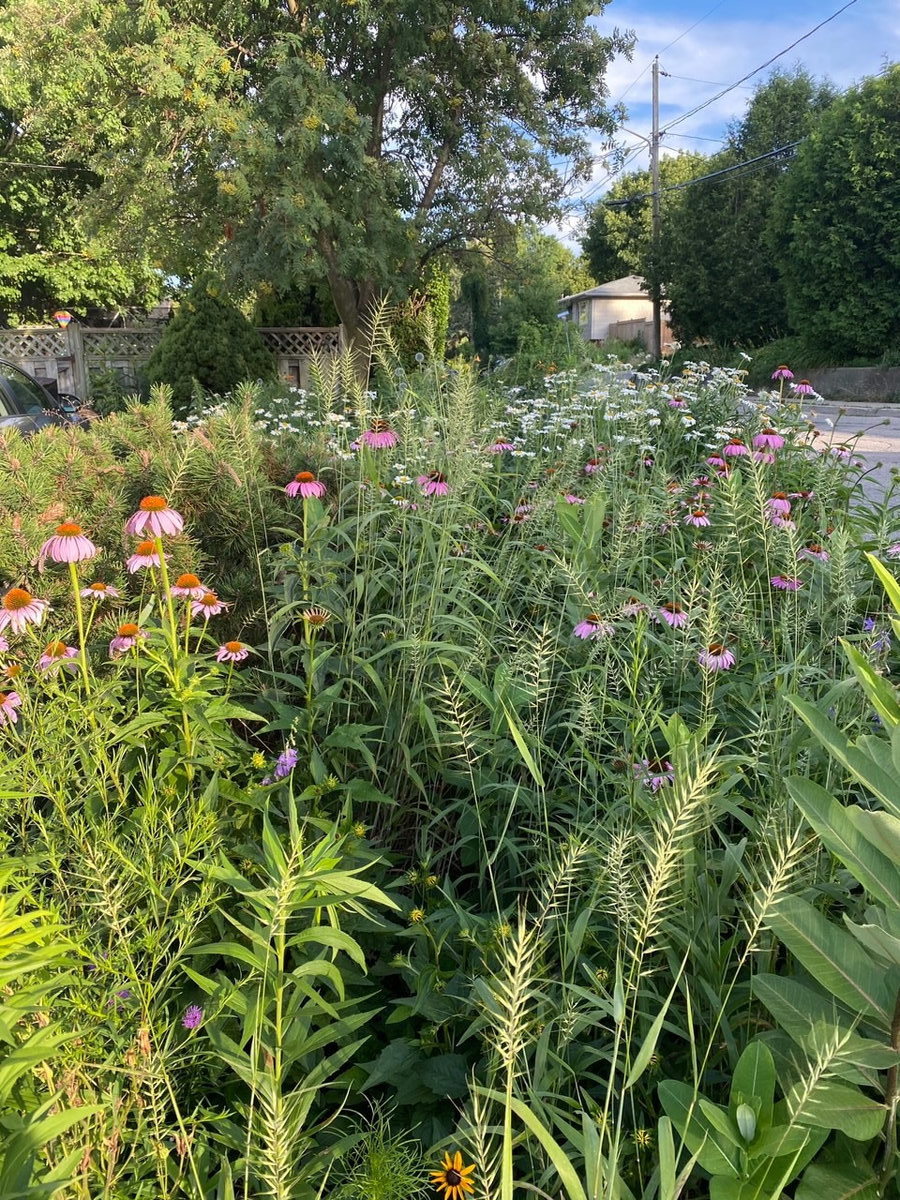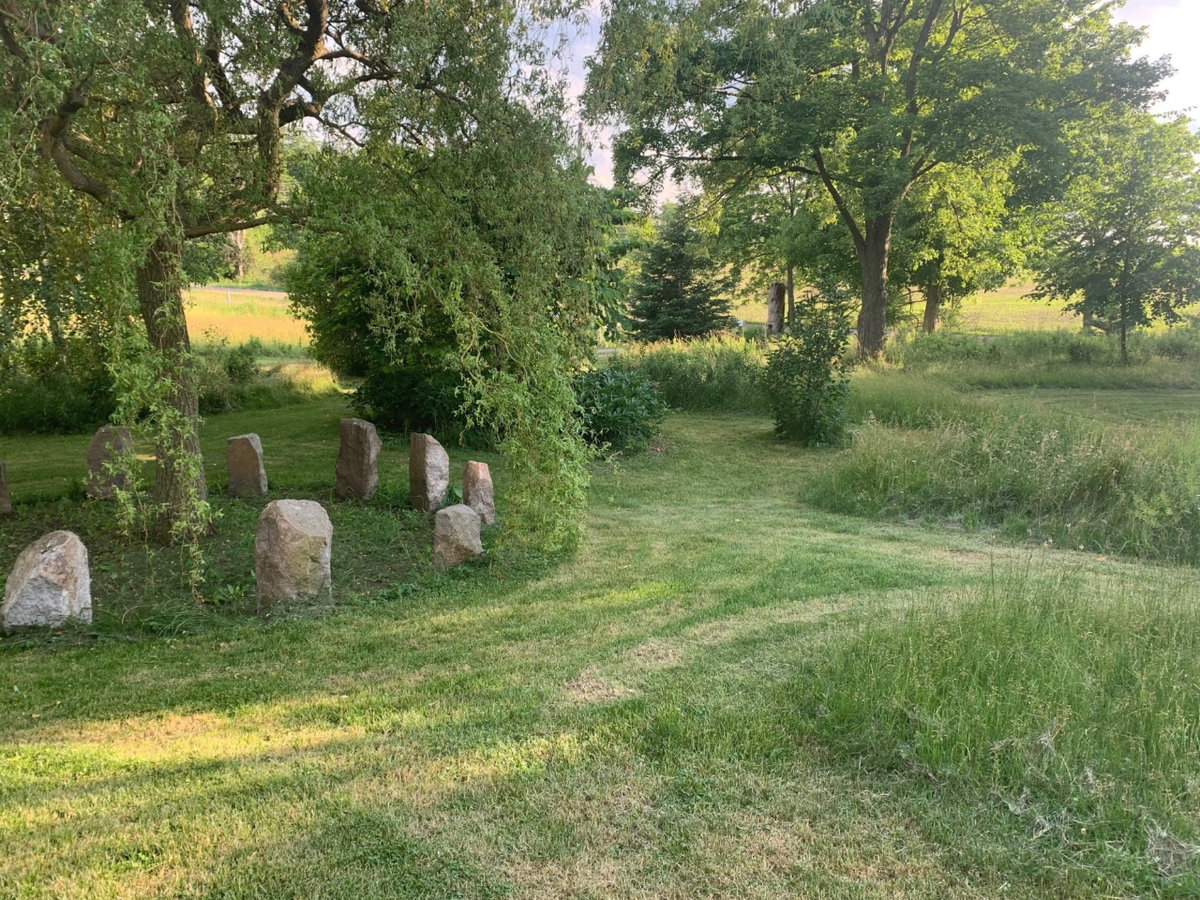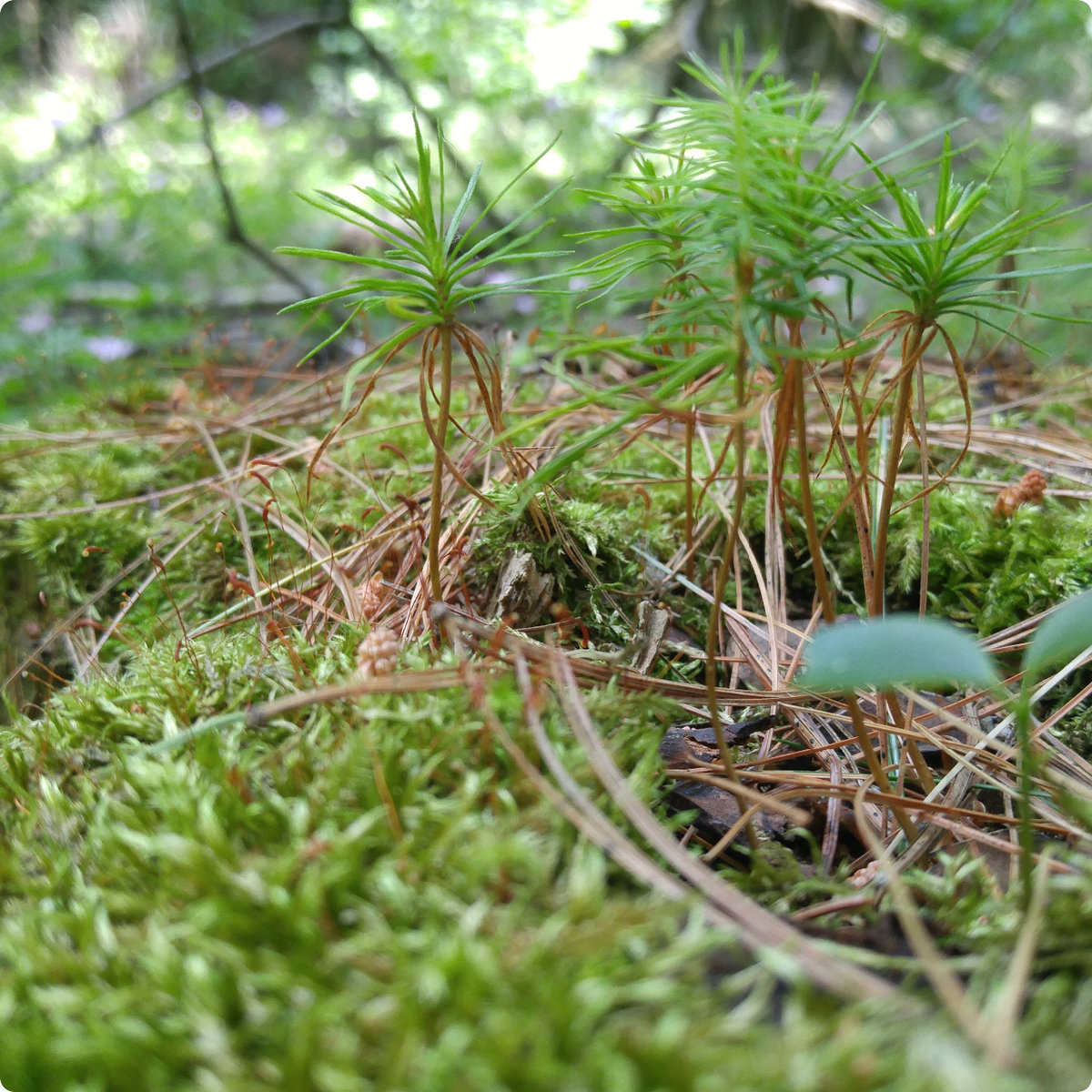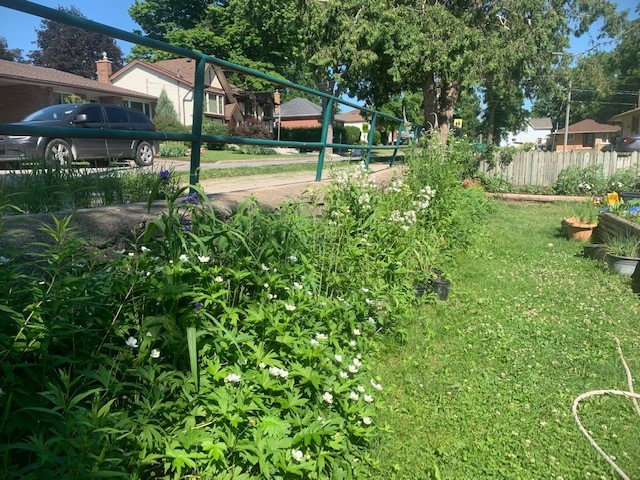
We collect basic website visitor information on this website and store it in cookies. We also utilize Google Analytics to track page view information to assist us in improving our website.
Written by: Summer Graham
Do you spend hours each week mowing your lawn to keep it maintained? Are you tired of spending money on herbicides to keep weeds at bay, or fertilizers to keep grass growing? Do local water use restrictions stop you from watering your yard, leaving it dry, brown and crispy in the summer? If you answered “yes” to any of these questions, a naturalized yard might be  for you!
for you!
Naturalization is more than just “letting your yard go”, it’s a way of
reducing the amount of effort needed to maintain an area by replacing a manicured lawn with native plants that are allowed to grow naturally. Native plants are selected and planted in a way that mimics naturally occurring habitat (e.g. woodland, wetland, or prairie), and the end result can provide a wide variety of benefits, including:
 As mentioned before, naturalizing your lawn is more than just not mowing it. So, what if you lack the resources or time to fully naturalize your yard, but you still want to replace some of your lawn? Most people aren’t ready to completely give up the benefits and ease of a low, consistent ground cover, or maybe they can’t naturalize the front of their yard due to local restrictions. Luckily, there are plenty of native species that can be substituted for grass! These species can be substituted for lawn and will remain fairly short and low to the ground, maintaining the open, clean look a grass lawn provides. Native sedge species are particularly easy and attractive grass replacements, forming dense, soft mats perfect for lounging or playing frisbee on!
As mentioned before, naturalizing your lawn is more than just not mowing it. So, what if you lack the resources or time to fully naturalize your yard, but you still want to replace some of your lawn? Most people aren’t ready to completely give up the benefits and ease of a low, consistent ground cover, or maybe they can’t naturalize the front of their yard due to local restrictions. Luckily, there are plenty of native species that can be substituted for grass! These species can be substituted for lawn and will remain fairly short and low to the ground, maintaining the open, clean look a grass lawn provides. Native sedge species are particularly easy and attractive grass replacements, forming dense, soft mats perfect for lounging or playing frisbee on!
| Graminoid Species | |
Pennsylvania Sedge(Carex pensylvanica)
|
|
Ebony Sedge(Carex eburnea)
|
|
Rosy Sedge(Carex rosea)
|
|
| Woody Species | |
Creeping Juniper(Juniperus horizontalis)
|
|
Bunchberry(Cornus canadensis)
|
|
Bearberry(Arctostaphylos uva-ursi)
|
|
Wintergreen(Galutheria procumbens)
|
|
| Other Native Options | |
Woodland Strawberry(Fragaria vesca)
|
|
Barren Strawberry(Geum fragarioides)
|
|
Common Cinquefoil(Potentilla simplex)
|
|
Native Mosses
|
 |
Advice from our staff with natural yards:
Heather – “I find the best method [for naturalization] is to put cardboard overtop of grass and then cover with leaves and/or mulch. The dying grass contributes nitrogen and the cardboard adds carbon. I cut into the cardboard and plant right into it. “
Zack – “I’m a big fan of Strawberry as a groundcover for lawn replacement. I’ve got a big patch of Fragaria vesca that has taken over a shaded section of my lawn. My Carex pensylvanica is also creeping out of my garden in to the shaded lawn areas and will probably outcompete grasses in these spots.”
 Jim – “Stopping mowing or abandoning cultivation is one route [to lawn naturalization] but it generally triggers a 2-3 year burst of annual/biennial ‘weeds’ (lots of clovers, Dandelions, Queen Anne’s Lace, Evening Primrose, Canada and Bull Thistles, Common Milkweed, Oxeye Daisy, Black Medic and Bird’s-foot Trefoil) until the Goldenrods get established and spread, which they will do just about anywhere in southern Ontario whether in urban backyards or in hardscapes. Most people are fearful of letting things succeed naturally, so amending with seed mixes containing some favorite native wildflowers is worthwhile but doesn’t eliminate the weedy cycle.
Jim – “Stopping mowing or abandoning cultivation is one route [to lawn naturalization] but it generally triggers a 2-3 year burst of annual/biennial ‘weeds’ (lots of clovers, Dandelions, Queen Anne’s Lace, Evening Primrose, Canada and Bull Thistles, Common Milkweed, Oxeye Daisy, Black Medic and Bird’s-foot Trefoil) until the Goldenrods get established and spread, which they will do just about anywhere in southern Ontario whether in urban backyards or in hardscapes. Most people are fearful of letting things succeed naturally, so amending with seed mixes containing some favorite native wildflowers is worthwhile but doesn’t eliminate the weedy cycle.
Also, it is worth mentioning that most meadows eventually attract woody species (native and non-native) as meadow is not normally a permanent state here, and intervention (i.e. at least one annual mowing) is required to keep these species in check. The speed that woody species move in depends on available seed sources, which aren’t always of desirable species in urban areas, and increasingly are dominated by Buckthorn.”
When searching the Network of Nature database for good groundcover species for your yard, select your province in Native Rage and then “ground cover” under Growth Form. If you have any furry friends or young children that like to play in your yard, be sure to do a little more research and use native species known to be non-toxic to kids and pets!
Resources and more reading
Naturalized Lawns Reduce Need for Mowing and Trimming
Edmonton Pushing for Lawns to Go Natural
Groundcovers and Lawn Alternatives
Gardening with Native Plants – BC
Join our email list to receive occasional updates about Network of Nature and ensure you get the news that matters most, right in your inbox.